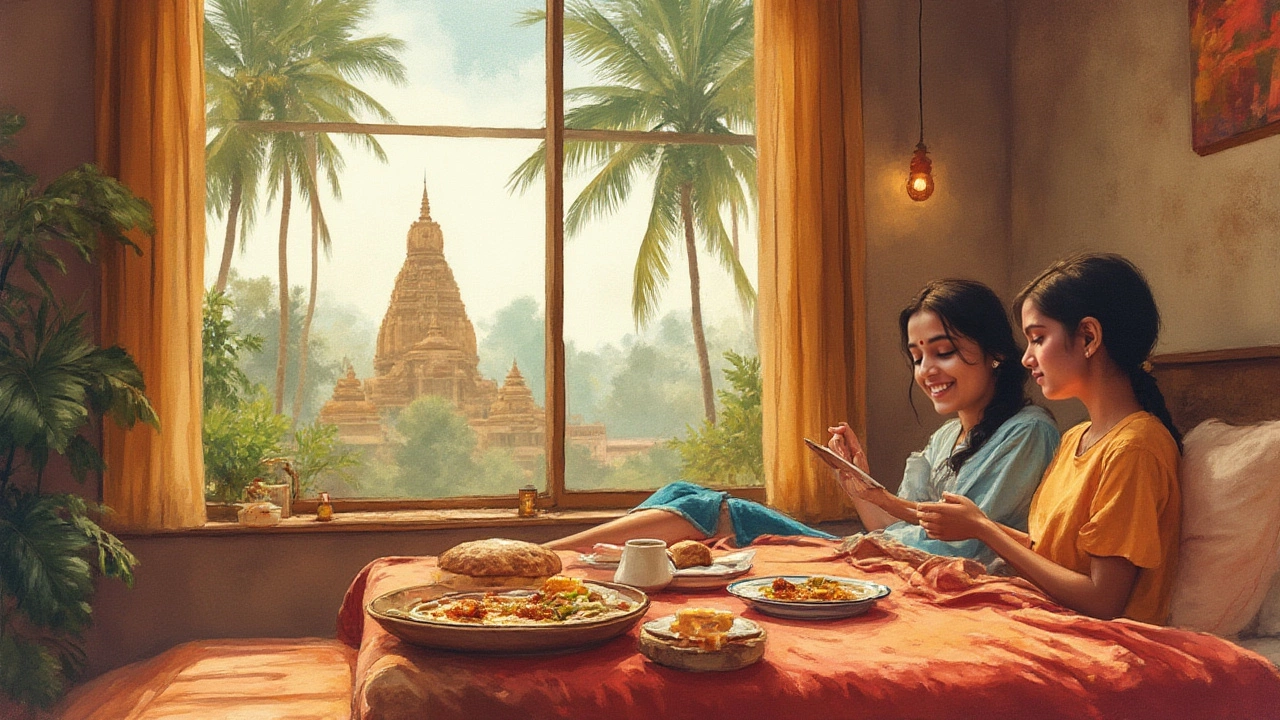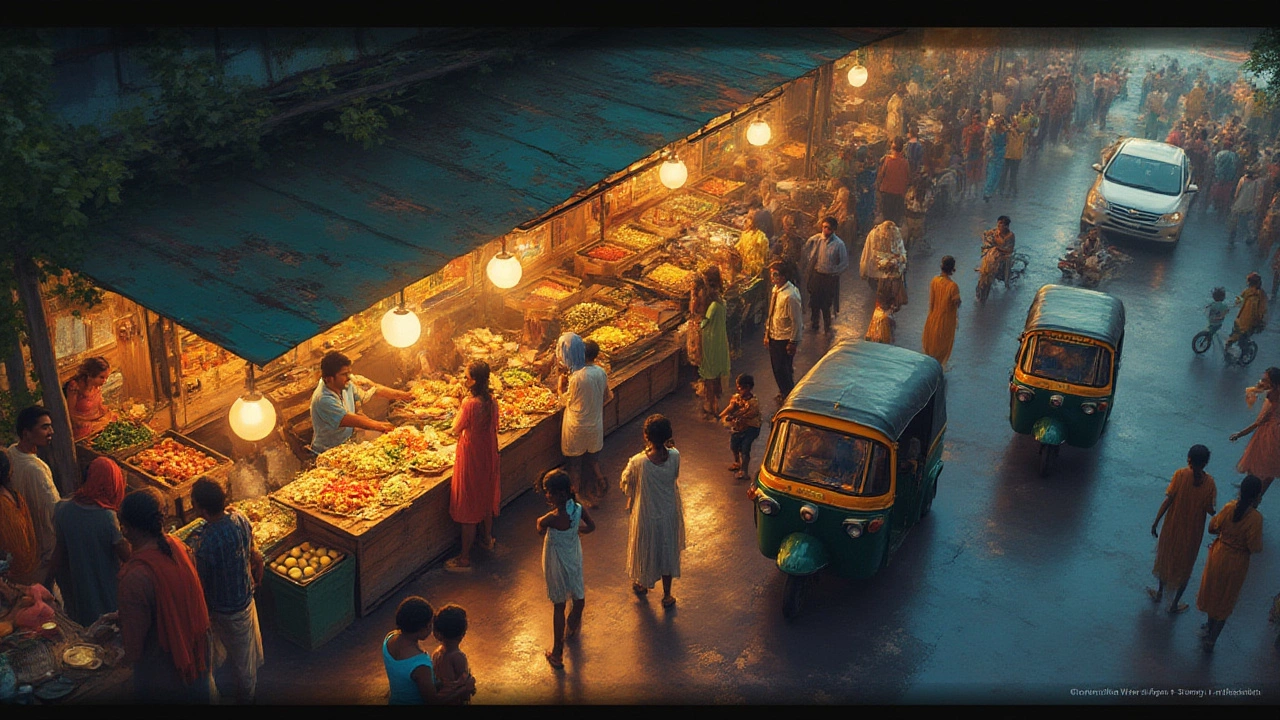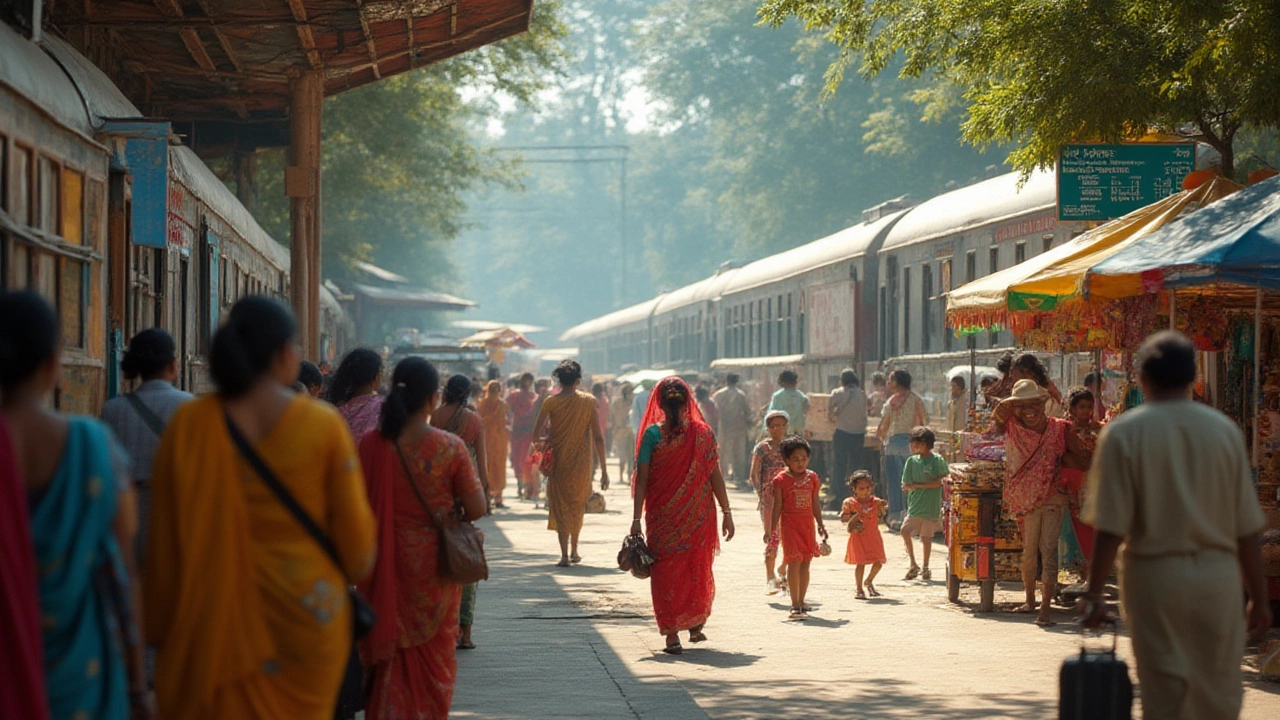If you think a trip to South India is only for backpackers or luxury seekers, think again. The range of costs might actually surprise you. Whether you’re dreaming of ancient temples in Tamil Nadu, the green backwaters of Kerala, or spicy street eats in Hyderabad, your wallet can take you pretty far—or be emptied pretty fast. When my wife Annie and I first planned our own trip with our little rascal Finnian and our feathered troublemaker Charlie, we found that South India’s costs shift like monsoon winds. One minute you’re eating dosas for change, the next you’re staring at a hotel bill that looks like a phone number. Let’s break down the reality of a South India trip cost in 2025, so you’re not left with surprises—just stories.
What Shapes the Cost of a South India Trip?
South India is not one flat price tag. Everything depends on your choices—mode of transport, type of bed, town or city, and what you want to soak in (beach, tea hills, palaces, giant puppets). Start with the basics. Flights into South India, especially Chennai, Kochi, or Bengaluru, tend to be cheaper than flying into Mumbai or Delhi from most international airports. Yet, hit the high season between December and February and you’ll see prices spike by 30-50%—that’s demand at work. Book outside these months and you can score a roundtrip from London to Chennai for around $600 if you’re quick on promo fares. Miss out and it’s easily $900+.
Visa fees for India as of 2025 stand at $40 for a one-month e-visa for most nationalities—that’s straightforward. Once you’re in, costs drop off fast or stack up depending on if you’re rolling backpacker-style or sipping cocktails in colonial mansions. Accommodation is your next mountain. You can crash in clean guesthouses for $15/night, lay up in mid-range hotels for $40–70, or drop $200+ in boutique heritage places. Some of those fancy spots throw in Kerala massages and sunset boat rides (the same ride would cost $8–$10 per head if you haggled with a local boatman).
Transport is a wild card. In cities, prepaid taxis from airports are safe bets—$10–$18 a ride, often less if you use local apps like Ola or Uber. Long-distance? Third-class AC seats on Indian Railways are about $8–$18 for a five-hour run, first class or “luxury” trains run $75–$200+. Buses are dirt cheap—think $3–$10 for overnight journeys, though comfort is a different universe. Car rentals with drivers (by far the most popular way families travel, thanks to bumpy roads and signage that could win a ‘Hide and Seek’ medal) cost around $45–$70 per day, including fuel. Add highway tolls or guide charges if you want someone narrating histories along the way.
Food is an adventure on its own. You’ll never go hungry or broke with South India’s legendary thali lunches (unlimited rice, curries, chutneys, papads) for as little as $1.80 in small towns—sometimes less if the owner has watched you sweat through a spicy sambhar and offers a friendly discount. Restaurant meals in cities run $3–$12. Splash for a rooftop seafood feast in coastal Kerala or Goa and you might pony up $30 per head. Tipping is casual—round up the bill or leave 10% for good service.
Don’t forget the little (and not-so-little) extras: internet-heavy types will want a local SIM with data—$4 for a month of unlimited in 2025 with Airtel or Jio, which is better than Europe or the US. Entrance fees for big sights add up: the Meenakshi Temple is free, but the Mysore Palace is about $7 per adult. National parks and reserve forests slap on ‘foreigner surcharges’—as much as $15–$25 for Bharatpur or Periyar, much less for local sanctuaries. If you’re after Ayurveda treatments, expect daily costs from $20–$100 depending on how intense and fancy you want it.
For families: kids under 5 travel almost free everywhere, hotels rarely charge extra for tiny ones, and activities like cooking courses, temple pujas, or spice plantation walks can be bargained down if you show up as a pack. Watch out for festival surcharges, especially if you accidentally plan during Onam or Pongal when everything doubles in price and rooms dry up.
South India Trip Costs by Travel Style
The “real” cost of your South India trip boils down to style. Loads of friends have asked me, “Can you really get by on $30 a day like some travel blogs claim?” Yes, if you’re solo, love public buses, and sleep in no-frills rooms. But if you (like me) travel with a spouse, a lively kid, or need a bit of air con now and then, here’s how things average out. For clarity, I’ve mapped out three travel tiers: shoestring, comfort, and luxury.
- Shoestring traveller: Dorm beds or basic doubles ($12–20/night), eat mostly local, use trains/buses, skip big entry fees. Day cost: $25–40 per person, or $800–$1000 for a 3-week trip.
- Comfort/mid-range: Clean hotels with air con and breakfast ($40–70/night for a double room), mix local eats and the occasional splurge, car hire for intercity hops, hit all major sights. Day cost: $70–110 per adult, or $2500–$3500 for a 3-week adventure for two.
- Luxury: Boutique or heritage hotels ($150–300/night+), fine dining, guided tours, private chauffeurs. Day cost: $200–400+ per adult, so a 3-week grand tour could hit $7000 per person—and you’ll get those sunset martinis thrown in.
| Style | Daily Cost (USD) | Total for 3 Weeks |
|---|---|---|
| Shoestring | 25–40 | 800–1000 |
| Comfort | 70–110 | 2500–3500 |
| Luxury | 200–400+ | 7000+ |
The comfort level is probably most common for travelling couples, families, and older adults. That said, things add up quick if you start booking every guided tour or keep grabbing imported liquor. Annie and I discovered that spending big on a few experiences—like a private spice farm lunch or an overnight houseboat in Alleppey ($120–200 flat for the whole family, all-inclusive)—was way more memorable than splashing out nightly for creature comforts we barely used (Finnian always slept best on cheap mattresses anyway).
One major tip: almost all hotels and car services in South India are very contactable on WhatsApp. This can cut your rate by 10-20% if you’re comfortable booking direct rather than through big travel sites. Prepare to haggle. It’s more like friendly bargaining than hard-nosed negotiations and is expected in markets and small guesthouses.
Avoid the big festivals if you want those comfort prices. Carnival (in Goa), Onam (Kerala), and Pongal (Tamil Nadu) are peak madness with room rates sometimes double or triple the normal—and things get booked up months in advance. On the other hand, if you are going for the festival experience, the cost is worth it but plan a bigger budget.

Major Expenses: Flights, Trains, and Road Trips
Getting in and around shapes your total spend by a huge margin. Many folks underestimate how sprawling South India really is. Travelling from Chennai over to Kochi or down into the Nilgiri Hills means covering hundreds of miles—roads are decent but winding, so calculate your time as well as your rupees.
As of July 2025, here’s what you’re looking at in terms of transport:
- International flights: A roundtrip from Europe or the US to South India main gateways costs from $600–$1200, depending on season and booking window.
- Domestic flights (e.g., Chennai to Kochi, Bengaluru to Trivandrum): Budget airlines like IndiGo or SpiceJet have made intercity hops affordable—fares often $30–$90 if booked ahead. These save heaps of time, especially on routes where trains might take 15+ hours.
- Trains: The backbone of Indian travel. AC 3rd class berths (plenty comfortable) for long routes cost $8–$18. Sleeper class is half that, but pack your earplugs. Reserved seats usually fill fast, so book a week or more in advance (especially for popular routes like Bangalore–Mysore or Kochi–Trivandrum).
- Buses: State buses are dirt cheap—less than $10 for a first-class seat over a 10-hour overnight haul, but schedules are more ‘suggestion’ than promise. Comfortable ‘Volvo’ or ‘Mercedes’ buses charge a bit more, but come with air con and less chaos at the rest stops.
- Rented car with driver: Expect $45–$70 per day inclusive of fuel. You’ll want this for cross-state sightseeing, Hill station trips (like Munnar or Kodaikanal), and for temple-crawling through Tamil Nadu. Taxis per km aren’t the best value over longer routes.
- Within cities: Use app-based taxis or auto-rickshaws rather than haggling with drivers. Ola and Uber work almost everywhere, with shorter trips typically $3–$8 depending on city and distance.
Here’s another real nugget: Indian rail tickets are released 120 days in advance, and top class seats go fast. If you’re rolling as a family during school holidays, sign up quick or risk standing tickets—no fun with a toddler and a flapping cockatoo (Charlie is not a fan of crowded compartments, for the record).
One more hack—try to group your sightseeing by region. South India is loaded with fascinating stops, but crisscrossing to see ‘everything’ will burn hours and cash. Pick one state as a base and explore its highlights. Kerala for backwaters and spice hills. Tamil Nadu for temple architecture and vibrant city markets. Karnataka for royal palaces and coffee plantations. The shorter your jumps, the more your rupees stretch.
Where Your Money Disappears Fast: Food, Rooms & Experiences
If you want to eat and sleep cheap, South India practically invites you. Stick to local mess halls, tiny hotels, and street-side tiffin joints (those steel plates loaded with idlis, vadas, and chutney), and you won’t spend more than $3–$5 a meal. Splurges, of course, are everywhere—especially in heritage hotels or beach-front seafood shacks where the sunset is worthy of a postcard.
Here’s how costs break down on average per day in 2025:
| Expense | Shoestring (USD) | Comfort (USD) | Luxury (USD) |
|---|---|---|---|
| Accommodation | 12–20 | 40–100 | 150–300 |
| Meals (3x) | 5–10 | 12–25 | 40–80 |
| Sightseeing | 3–7 | 5–12 | 30–50 |
| Transport (daily avg) | 5 | 12 | 40 |
| Extras/Shopping | 2 | 10 | 50 |
If wildlife parks, cooking classes, or a fancy Ayurvedic massage are on your bucket list, expect these to cost extra. A half-day guided trek in Wayanad is around $15–$25 per person. Authentic on-site Ayurvedic sessions (as in, with real practitioners in Kerala) range from $20 to $100 per session. Don’t forget those spontaneous splurges—like buying a handloom saree in Tamil Nadu or a kilogram of green cardamom at a Kochi spice market. Both are bargains by Western standards, but the number of “little” purchases adds up shockingly fast.
We learned quickly to keep a tiny stash of cash for temple entry fees, camera permits, or local guide tips. Digital payments (UPI, Google Pay, or Apple Pay) work nearly everywhere now, but in small villages and at heritage shrines, only rupees do the trick. You’ll find ATMs in every large town, but watch the $2–3 foreign card withdrawal fee—take out enough for several days at a time.
Keen on shopping? South India is king for silk sarees, sandalwood carvings, and fine teas and spices straight from the estates. Markets love a good haggle—the first offer isn’t the last. Walk away if you’re not sure—usually, you’ll be called back with a laugh and a better price.

Smart Tips to Make the Most of Your Budget
You want the full South Indian experience—without bleeding your travel budget dry. I’ve got you covered. Here are my top personal tips, hard-won from road trips, train delays, and more dal than I can count:
- Book hotels and trains direct. Many places charge 15-20% less for direct pay (try email or WhatsApp!).
- Eat where the locals eat. If the place is busy, it’s cheap and tasty. Quiet restaurants in touristy spots often cost more and taste less.
- Combine sightseeing. Many temples and palaces are clustered. Group them in one day with an Ola/Uber or private driver—it’ll slash costs.
- Try day buses for short runs (<100km). Super affordable, scenic, and surprisingly comfy now.
- Pick a local SIM at the airport or train station. A month of unlimited data in 2025 is under $5, and it saves a headache booking rides or checking maps.
- Carry some small denomination cash. For tips, chai breaks, coconut water stalls, or temple donations.
- Travel off-peak. June–October is monsoon, but crowds are thin, prices drop, and the landscape gets lush (pack a poncho, though).
- Book houseboats, safaris, and day trips directly—avoid middlemen. Negotiate, especially for multi-day packages.
- If you want a taste of luxury, pick a couple-night splurge (like a traditional Kerala houseboat or heritage palace) but keep the rest of your trip affordable.
- Souvenirs: Bargain, but be friendly. Vendors expect it, and the best deals come with a smile.
- Don’t forget travel insurance. Good plans cover medical, cancellations, and lost bags for as little as $30 per month in Asia.
- Families: Ask about ‘extra bed’ fees. Many South Indian hotels let kids under 6 stay and eat free.
The bottom line? Your south india trip cost is as flexible as your travel style. Whether you’re planning a solo backpack run, a honeymoon, or a chaotic, family-style road trip with rogue parrots in tow, there’s room to work South India into your budget. Just make a rough plan, double-check the calendar for festival surges, book your transport early, leave a little space for impulse cravings (literal and figurative), and you’ll get plenty of bang for your rupee—and stories you’ll tell for years. Don’t forget to pack your sense of adventure and a healthy appetite; South India will reward both.
